Rhythm in interior design - 11 ways to use this clever technique for rooms that look professionally done
You don’t need to be a natural to achieve great rhythm in interior design, as a handful of principle techniques will get you in step
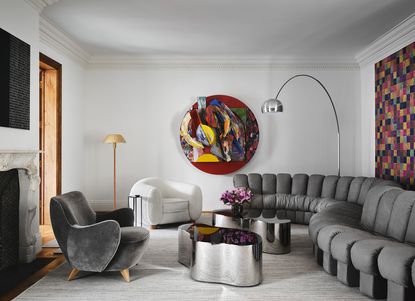
Not unlike smooth moves on the dance floor, rhythm in interior design is essential for creating flow – it’s all about choosing a pattern that organizes decor and furnishing, creating a design scheme that moves your eye throughout space in a pleasing way.
"The principle of rhythm in interior design is a very natural flow and fluidity of moving between spaces both with your eye but also with your mind,” says Chad Dorsey of Dallas’ Chad Dorsey Design. “It’s a visual and mental harmony that may have highs and lows but avoids abrupt transitions or stops and starts.”
Rhythm is perhaps most linked with repetition in interior design; we can achieve continuity and order when certain shapes, colors, and materials repeat throughout space.
"Rhythm is using repetitive elements around a space to tie it together and lead your eye around – like a piece of music with peaks and valleys,” explains Jessica Davis of Atelier Davis, comparing rhythm to a drum beat. “For example using an arch in the architecture and then repeating it in the arm of a sofa, in the shape of a mirror, etc."
And while repetition is one of the more dependable solutions in the designer’s toolbox, there are plenty of design principles that work together to give your space a serious groove – below, we’ve asked design experts to give us their top pointers in creating interiors with rhythm.
What is rhythm in interior design?
The goal of rhythm in interior design is to organize the contents of any space with a pattern, one that moves our eye around with ease and keeps things visually interesting. It's an approach that is beginning to crop up more and more in interior design trends decorators start to appreciate its advantages.
If we’re thinking of the textbook principles of rhythm – those you might learn about in Interior Design 101 – there are five basic types including repetition, radiation, contrast, gradation, and transition. Each principle builds a pattern, or creates continuity, to connect decor and furnishing and guide your eye through space with organized movement.
It can help to think of rhythm like a song that just carries you away – similar to a catchy beat, an interior with great rhythm is eye-catching. "You've got the chorus which would be the main pieces, and then all of the tempo changes which would be where all the personality comes into play,” says Raili Clasen of RailiCA Design.
How to use rhythm in interior design
1. Find a pattern
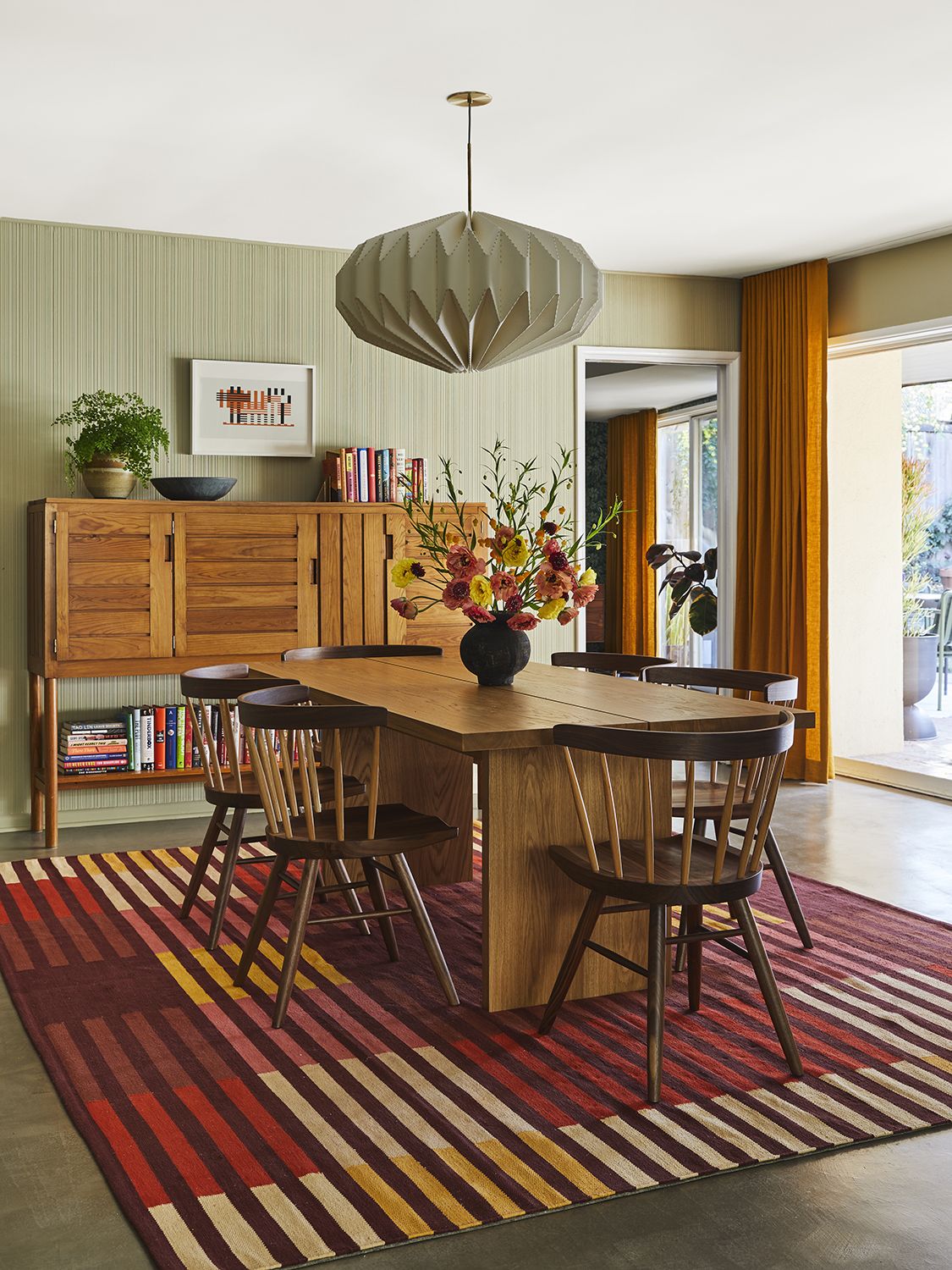
When you are creating rhythm in an interior, you are composing a sequence out of various design elements – it’s about creating a visual path for viewers to follow, one that helps them find the beat. When organized in a steady or successive movement, anything from shapes to colors and texture can be used to create rhythm.
To find a pattern worth repeating in this retro home, Sarah Zachary of Zachary-Jones Studio looked to the existing architecture, where plaster walls with a linear texture were a perfect source of inspiration. “We played off the lines of these features with the geometric rug, the graphic cabinet and the clean folds of the drapery,” says Sarah of this dining room. “There are lines that are running parallel and perpendicular in a surprisingly calming, not busy way.”
2. Start with repetition
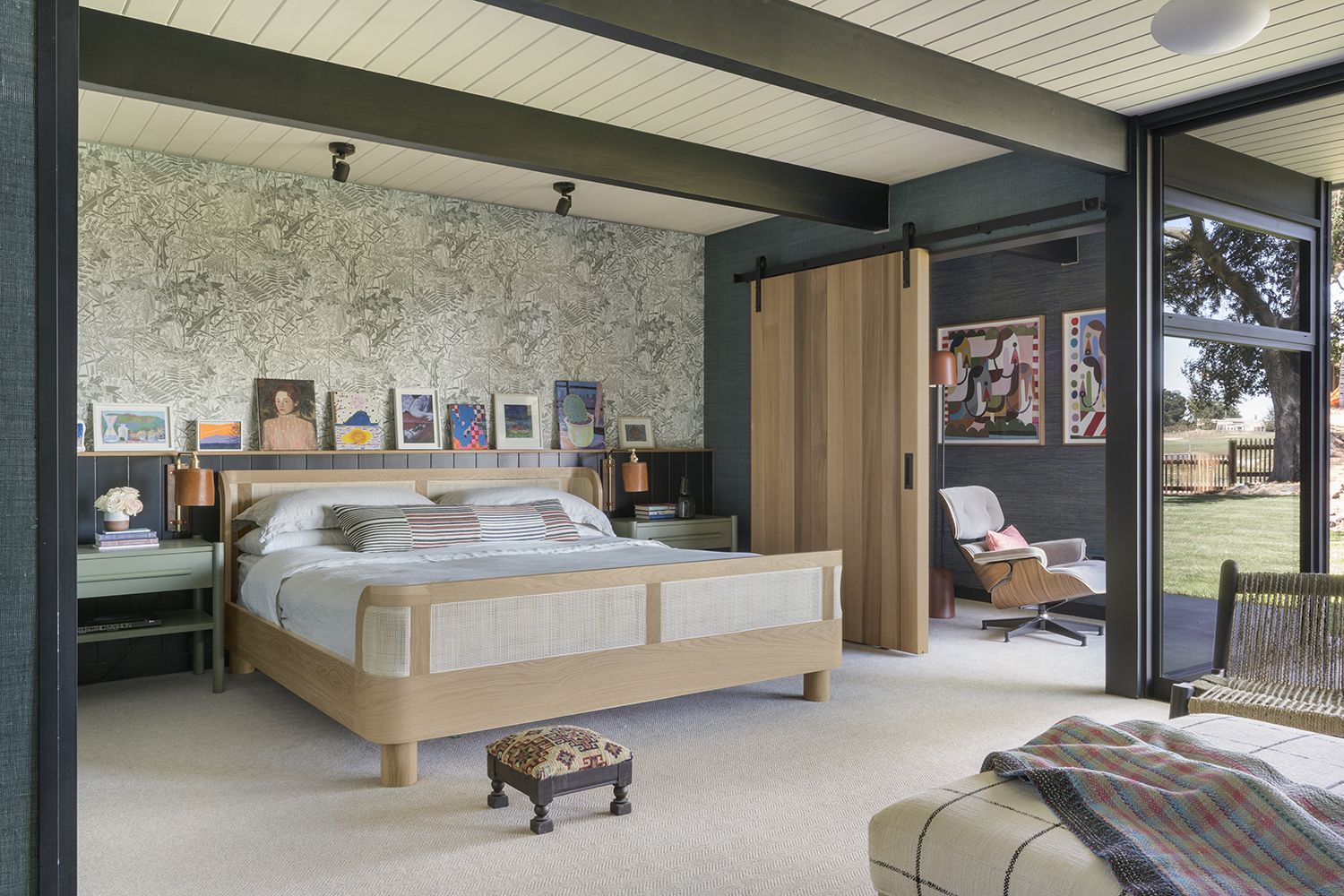
One of the easiest forms of rhythm is repetition. This principle creates continuity by repeating a design element throughout your scheme, creating stability but also visual flow – like trail markers through a forest. "This can be done by repeating shapes, materials, colors, textures, etc,” says Jessica Davis.
In the modern bedroom in Palo Alto above, several repeating design elements work together to create rhythm. “In this room we repeated some strong black tones in the beams, the wainscot behind the bed, the barn door track,” explains Jessica. “We also contrasted the black with repeating warm wood tones such as on the bed and the oak wood door. The repetition of the small artwork along the ledge also gives a distinct sense of rhythm through the space."
3. Change up repetition to create asymmetry
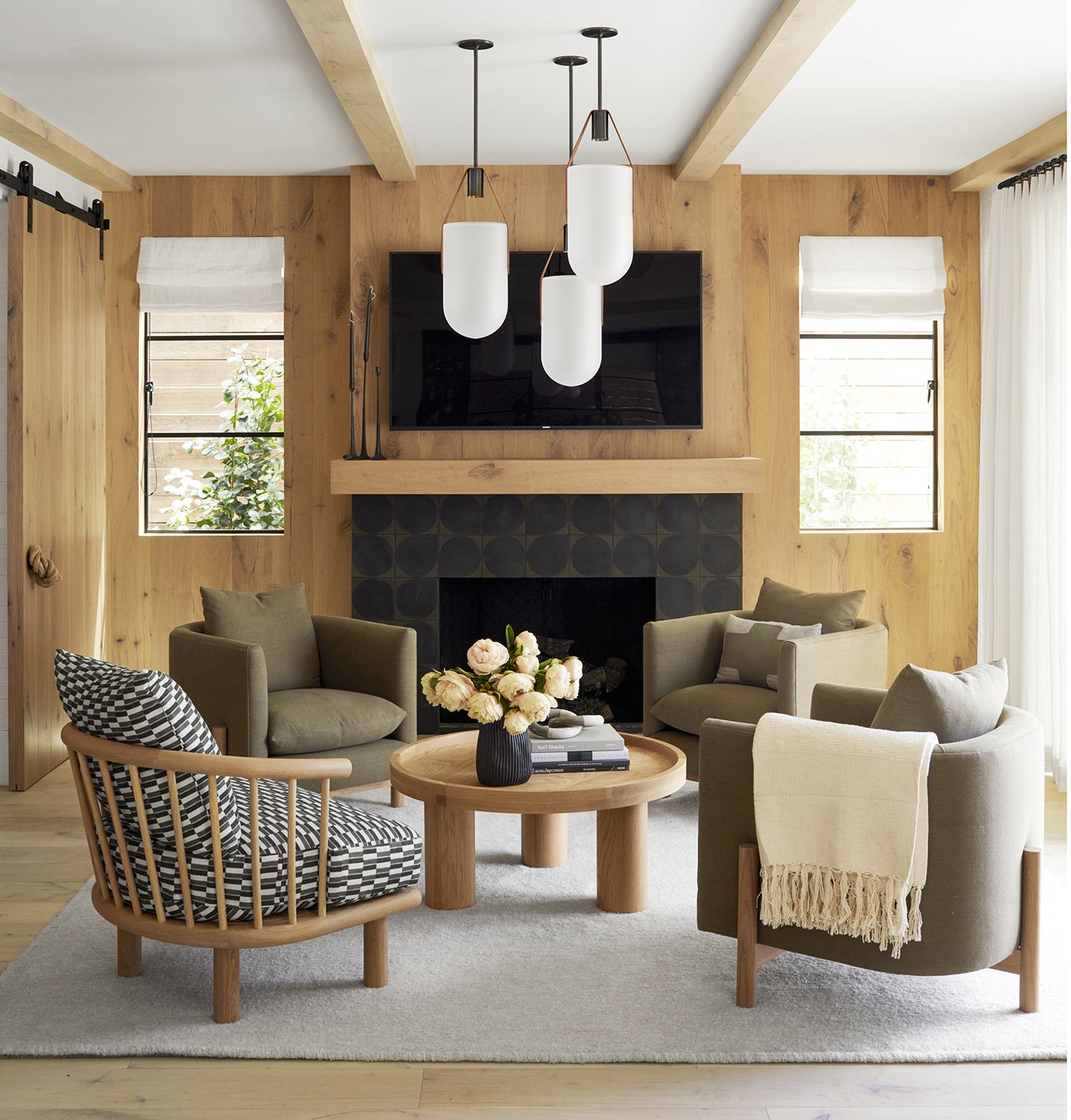
While repeating key elements throughout your space can create a steady rhythm, a simple trick to avoid same-same design schemes is to switch up the pattern. Think of it like a key change, swapping out your recurring element with something similar yet refreshing. This is an approach mastered in the modern take on symmetrical living rooms where one or two pieces are always slightly off-kilter.
You’ll find a clever example of this in the living room above, where cylindrical shapes (smooth furniture legs echo the suspended pendants, bringing the eye up and down the space) create rhythm while one bold change adds visual interest. "For our CDM living space, we wanted to mix and match patterns, directions and shapes while having fun with shades of green," says Raili Clasen. “Changing out one chair in a set of four with similar color and pattern – but different – makes the room a bit more playful."
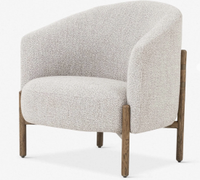
Isak accent chair, Lulu and Georgia
Just made to be paired - or even tripled - in a living room, this enveloping tub chair is ideal for a sociable seating placement in a rhythmic living room.
4. Try radiation when you have a visual centerpiece
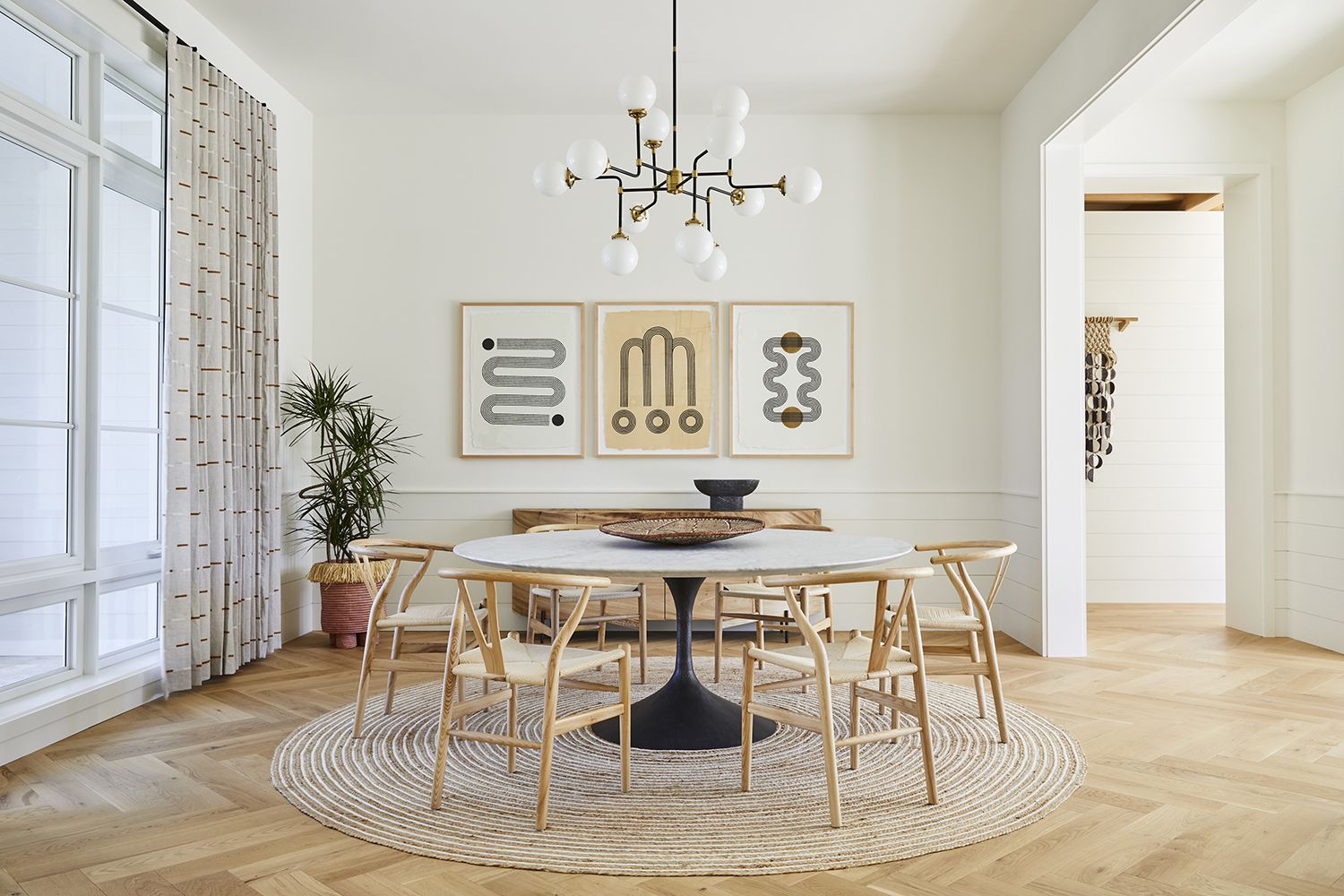
Radiation is easy to spot, in part because it revolves around a focal point. Your furniture and decor will rotate and repeat around this central piece to give the eye a point of view and direction. It’s also the type of orientation seen often in dining rooms with circular shapes, where chairs encircle the table in an organized movement.
This was the case in the minimalist dining room above, where Miami’s Bunsa Studio leaned into a radial furniture layout to create a ‘formal’ feel. “The circular dining table works really well in the square room; this radial symmetry reinforces that formality,” explains Jennifer Bunsa. “We used large scale elements to balance each other in this space – the chandelier and the large circular table balance each other.”
5. Use gradation for a gradual rhythm
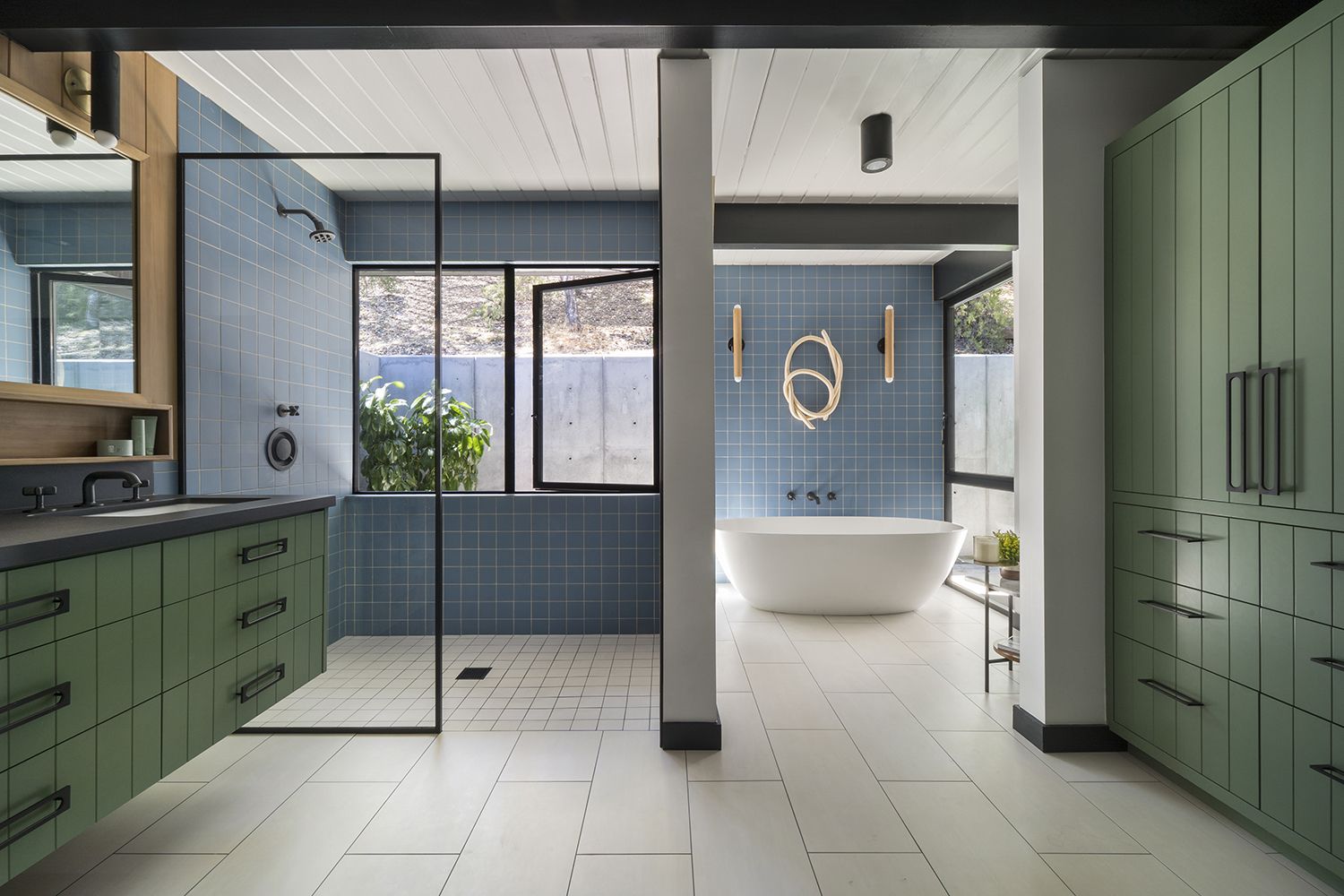
If you’ve decorated with books arranged by height along a shelf, or assembled a group of statement vases from short to tall across a table, you’ve created a type of rhythm known as gradation. The gist of this concept is to create progression by repeating similar elements in different scales (like a series of decor that gradually changes from small to large and vice versa) across space. This can also be applied to color, creating a gradual shift from light to dark shades; the point is to guide your eye across the space.
You can visualize this sense of progression in the modern bathroom in Palo Alto above, where Jessica Davis used a series of right-angled shapes to help move the eye throughout the space. "We used a lot of rectangular and square shapes here but varied the size graduating from large rectangular window openings, medium sized floor tiles to smaller square wall tiles," explains interior designer Jessica. "Linear rectangular pulls, the rectangular vanity shelf etc all serve to repeat the same elements but at a graduated scale."
6. Look to your staircase to understand gradation
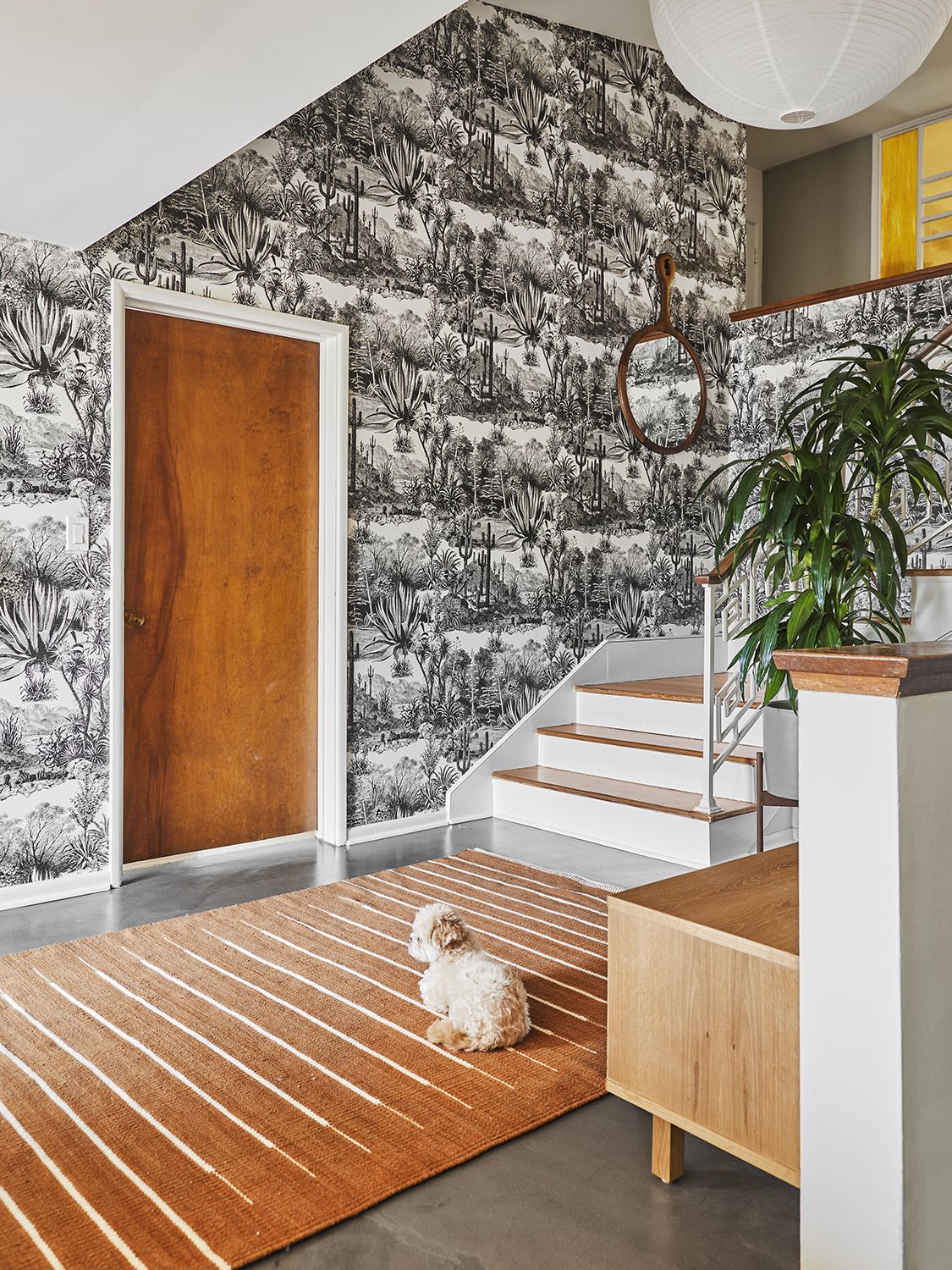
Still not sure where to use gradation? It’s a natural fit for staircase ideas, as repeating steps create a steady progression from one floor to the next. Your eye knows exactly how to move through this space (up, down), and it’s why choosing a patterned staircase runner or a striped carpet can double down on this linear flow.
You’ll find a similar example of this in the staircase above, where the entryway kicks off the upward rhythm thanks to a patterned rug. “Even starting from the lines of the rug, they direct you to the stairs,” says Sarah Zachary of Zachary-Jones Studio. “The contrast of the white risers and wood treads draws your body and gaze further to the final destination which is the amber divider which I feel is the design heart of the home.”
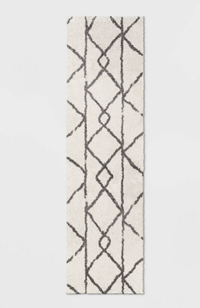
Geometric rug, $65, Target
The linear pattern of this runner guides the eye forwards and then up the staircase. Plus, it's a bargain at only $65.
7. Use curvy furniture to achieve smooth transition
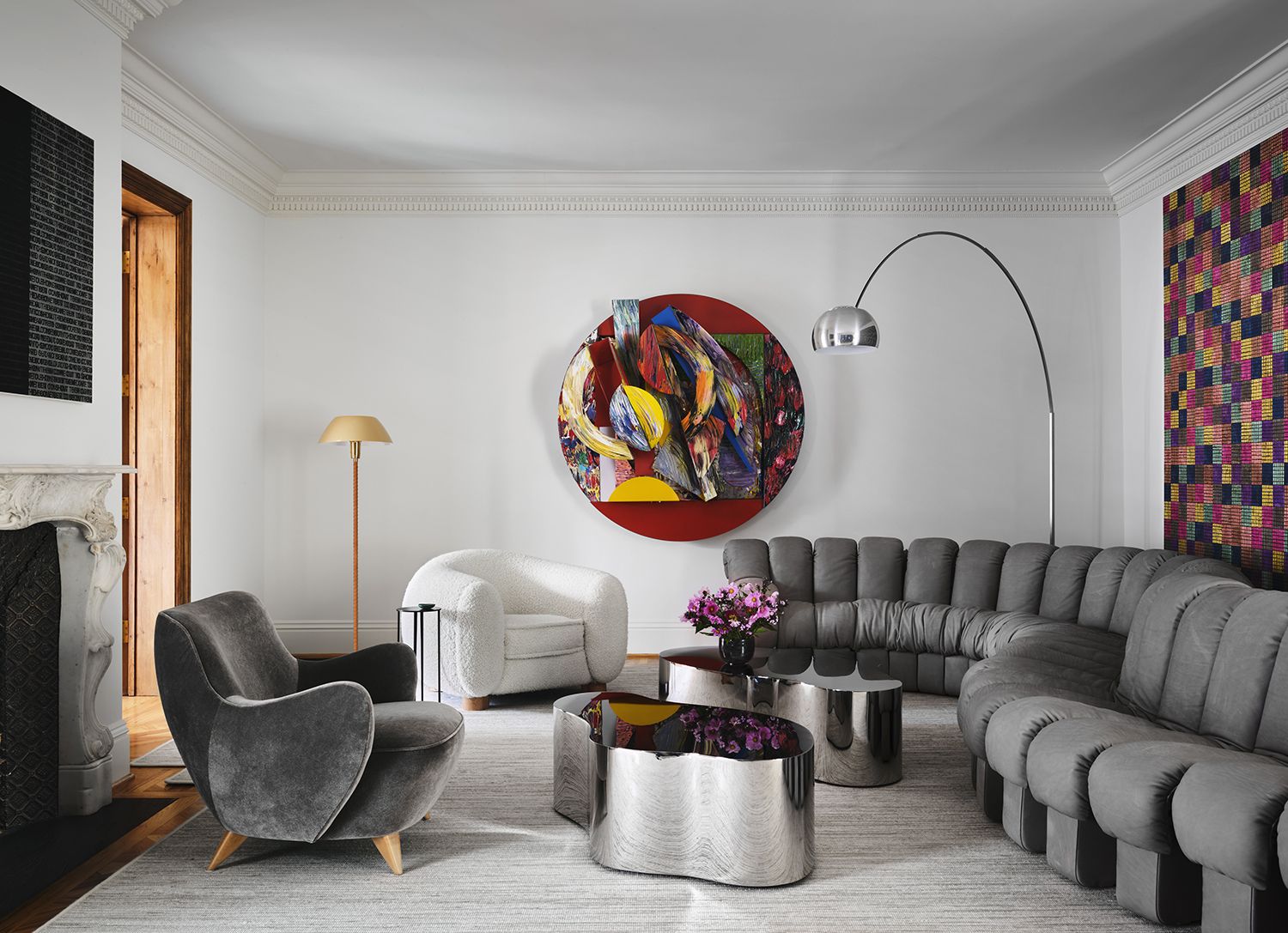
Think of transition as highlighting a designated path; this form of rhythm uses a leading design element (most often a shape) that guides your eye in one fluid motion from one part of the room to another. One way to achieve this is via curved furniture that lends soft silhouettes and rounded edges to create smooth transitions from corner to corner.
In the living room above, a curved sofa does most of the work while other organic-shaped pieces (a telltale sign of modern living room furniture) support the smooth transition across coffee tables and club chairs. "In this project, the Desede Sofa created rhythm in the room by softening an unnaturally long rectilinear room and moving one from this space naturally toward another room on the front of the home," says interior designer Chad Dorsey of Chad Dorsey Design.
8. Use transition on and off the wall
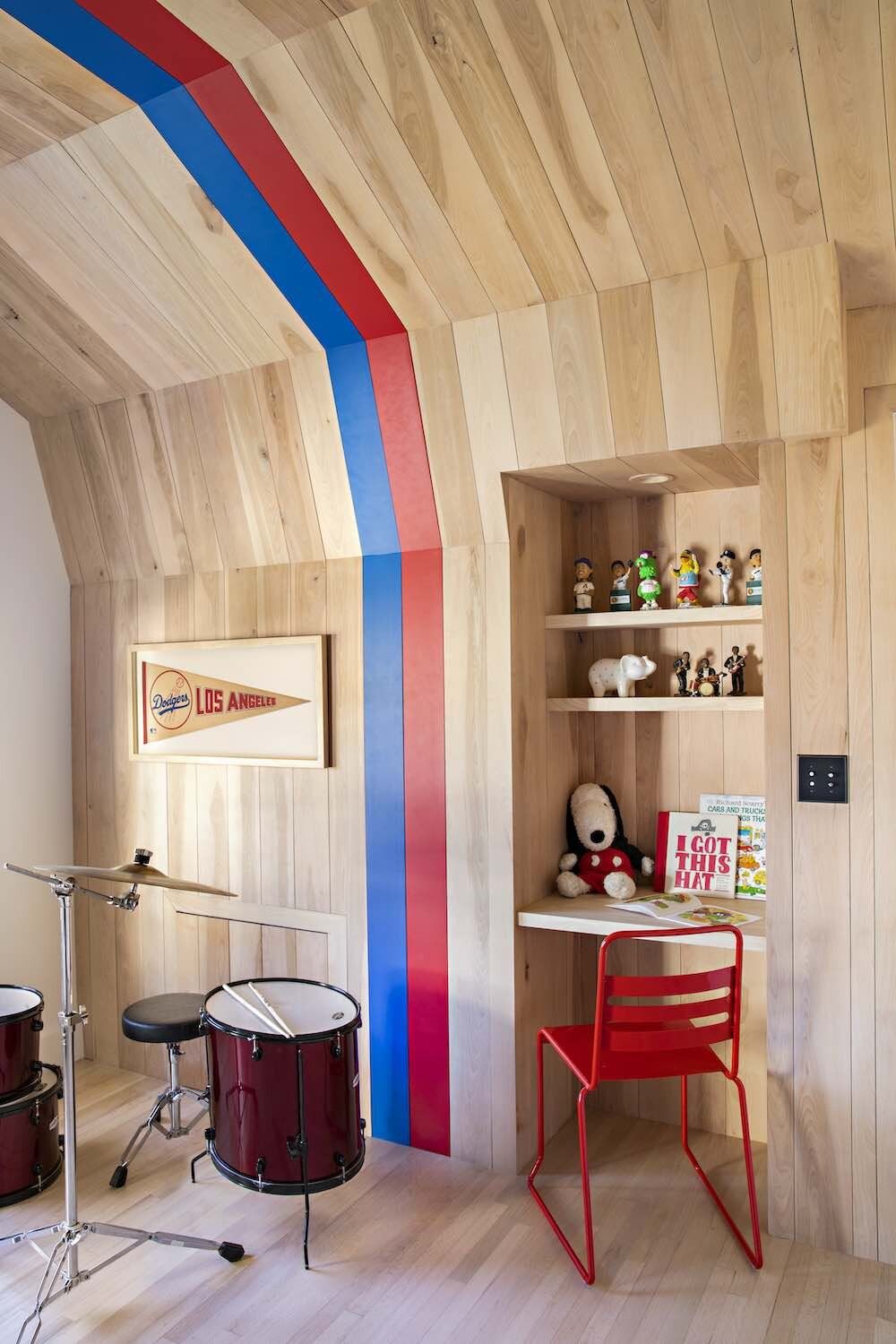
Transitions aren’t just achieved with furniture — they exist in architecture, too. One common architectural transition is an indoor arch (which can instantly elevate your space while creating smooth, uninterrupted visual lines) while curved walls and bow windows can also ease the eye across your space.
In the bold playroom above, designers RailiCA Design created a transition that emphasizes the verticality of the architecture, highlighting the upward curving walls. "Nothing like a good comp stripe to create transition," notes interior designer Raili Clasen. "In the Coronado kids space, we created an uninterrupted stripe from wall to ceiling to wall to lean into a vintage vibe."
9. Give texture to your rhythm with contrast
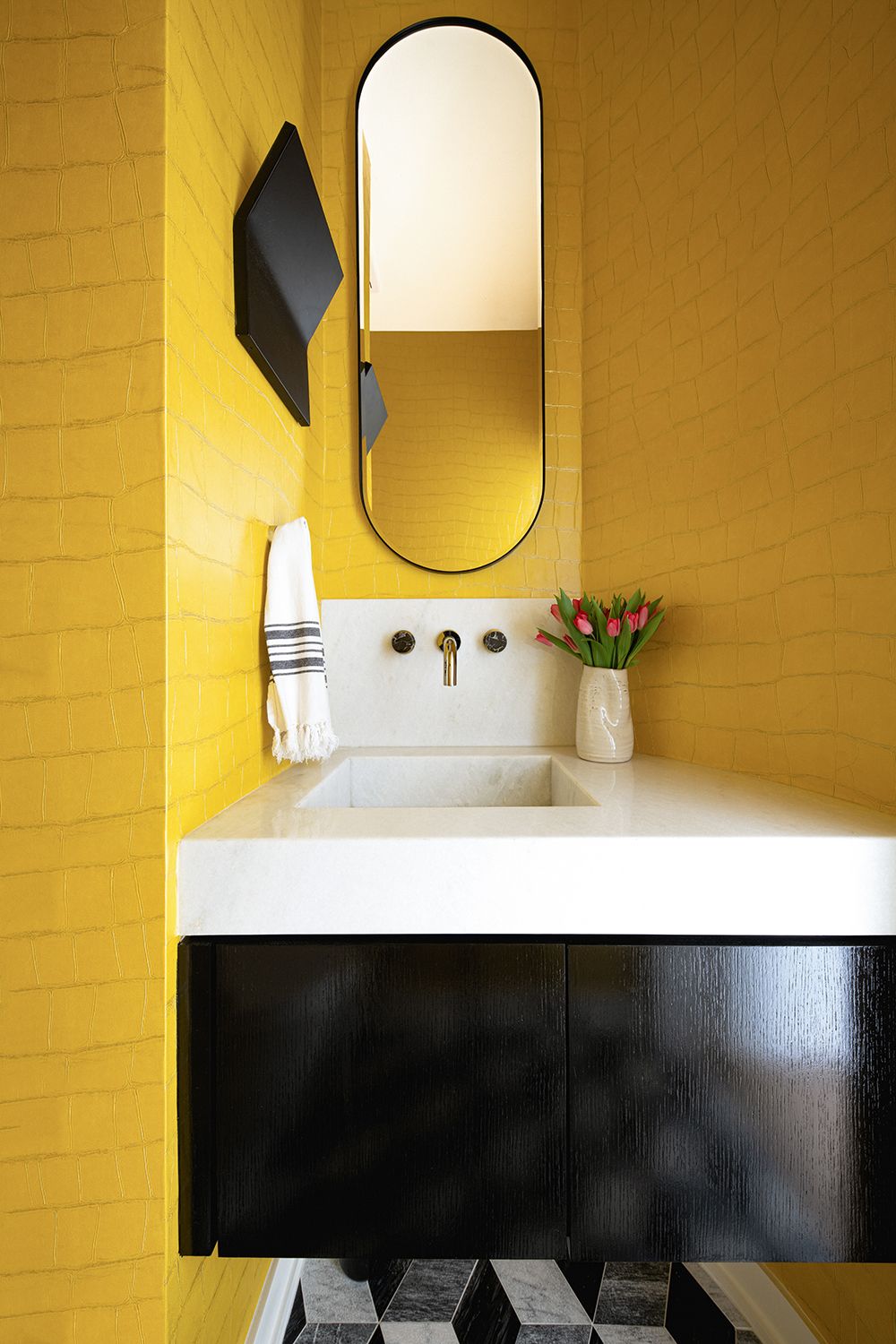
When you create an interior with opposing design elements (like two dominant colors, shapes, or textures) it helps move between both extremes. This stark difference creates contrast, one of the most tried-and-true forms of rhythm. Color is perhaps the easiest way to approach contrast, as many designers use it to establish mood and interest. ”No one color is the star alone, it is only when colors are used in tandem that the tension and contrast provide interest,” says Philip Thomas Vanderford, founder of Studio Thomas James.
You’ll find a great example of this in the powder room above. A long and ovular mirror gives contrast to the right-angled sink and cabinetry, while bold colors – yellow and black – inspire movement. “I think the boldness works well because the repetition of the black elements creates a visual rhythm,” says Vanderford. “This repetition allows the eye to travel though the room in a balanced manner and keeps a space from feeling overdone or too bright. To keep a space feeling clean and contemporary, narrow down your color palette to one of two specific colors.”
10. Combine several types of rhythm in one interior
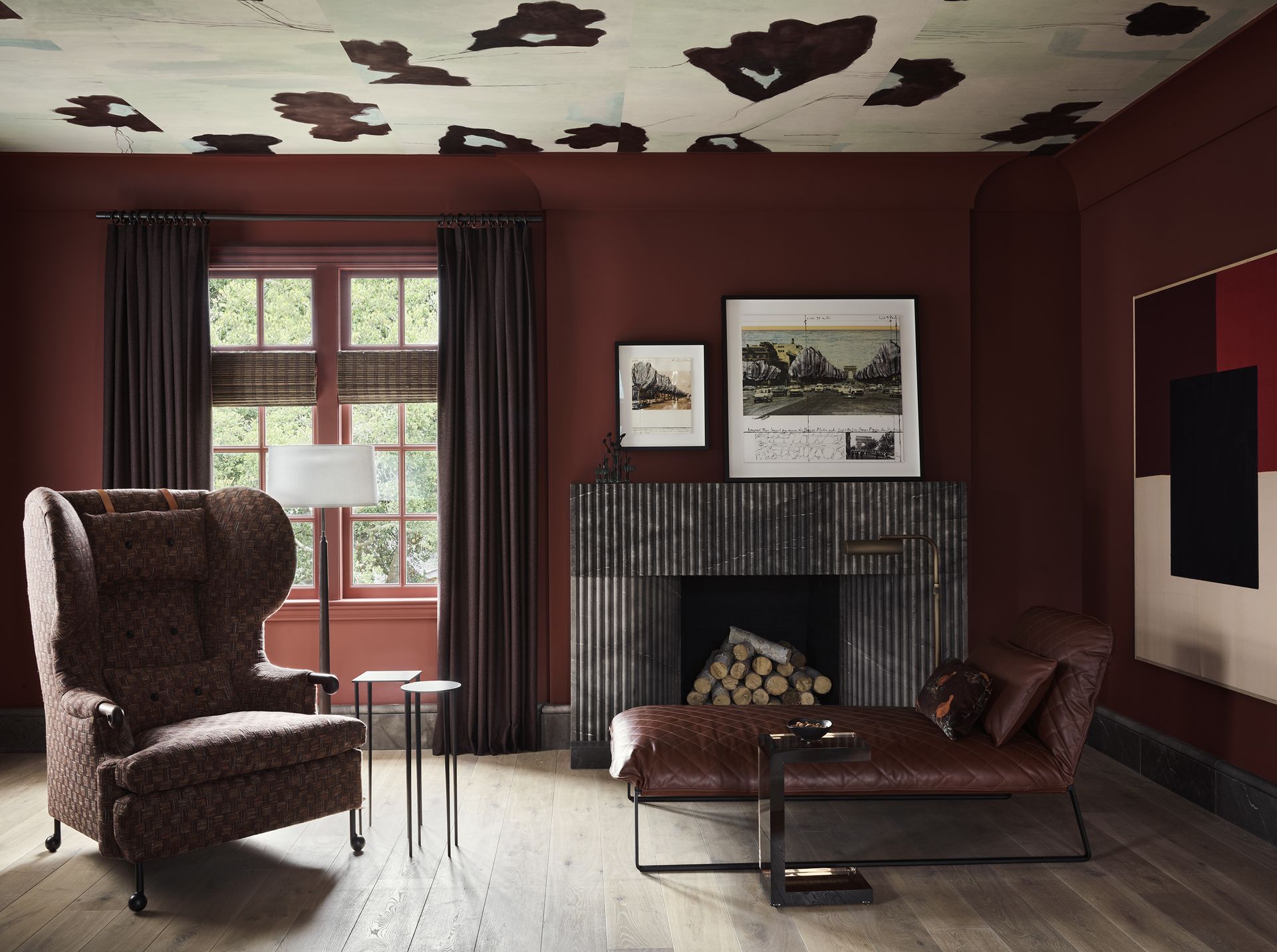
Like composing music, great rhythm is anything but one note — it’s why interiors with depth can layer a variety of principles without losing a sense of harmony. There is a real balance in interior design when this is done well. You’ll see this in action throughout the aptly named interior above – called The Listening Room – where anything from gradation (framed prints in different scales) to contrast (moody walls with a white patterned ceiling) and repetition (plenty of linear shapes abound) work together to create balance.
“The deep color was a natural backdrop for these rhythmic lines of the fluted fireplace, drapery, [and] verticals on the bookshelves,” explains designer Chad Dorsey. “All of these vertical rhythm pieces against the dark backdrop help give the illusion of taller ceilings in this home that had low ceiling heights.”
11. Look to patterned prints, textiles, and decor for movement
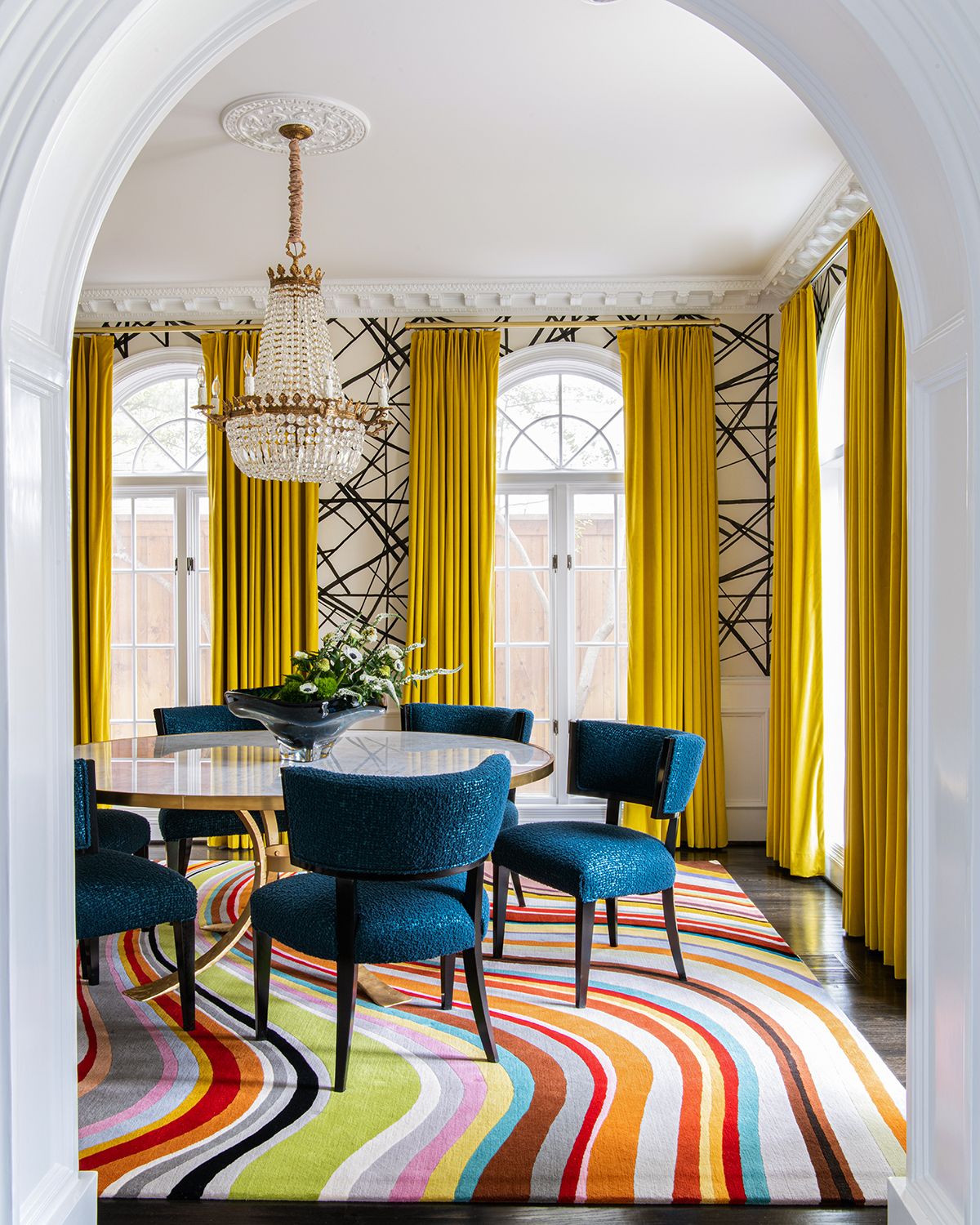
To infuse visual interest in one stroke, incorporating a pattern or print can lend dynamic flow to your scheme. But if you’re bringing several complementary designs into one space, designer Philip Thomas Vanderford always recommends variety. “No matter what aesthetic you are trying to achieve you need a variety of textures, finishes and colors,” explains Vanderford. “Without this, the space will feel flat.”
In the bold dining room above, Studio Thomas James incorporated a variety of patterns and texture. “We have a heavy texture on the chairs, and rich velvet for the drapery, an organic flowing pattern on the floor, and geometric wallpaper,” says Vanderford. “We then polished stone and brass with matte paint and soft goods. This variety is the key to balance and allows your eye to move though the space in a pleasing way regardless of how bold the interior is.”
Be The First To Know
The Livingetc newsletter is your shortcut to the now and the next in home design. Subscribe today to receive a stunning free 200-page book of the best homes from around the world.
Keith Flanagan is a New York based journalist specialising in design, food and travel. He has been an editor at Time Out New York, and has written for such publications as Architectural Digest, Conde Nast Traveller, Food 52 and USA Today. He regularly contributes to Livingetc, reporting on design trends and offering insight from the biggest names in the US. His intelligent approach to interiors also sees him as an expert in explaining the different disciplines in design.
-
 How to Thaw a Frozen Pipe — Learn Everything You Need to Know in 5 Minutes With This Guide
How to Thaw a Frozen Pipe — Learn Everything You Need to Know in 5 Minutes With This GuideWinter storm caught you off guard? We asked an expert — just how do you thaw a frozen pipe?
By Hugh Metcalf Published
-
 The 12 Very Best Silk Bedding Pieces — As Our Style Editor Says: 'It's What Dreams Are Made Of!'
The 12 Very Best Silk Bedding Pieces — As Our Style Editor Says: 'It's What Dreams Are Made Of!'Slumber in lustrous luxury with the very best silk bedding sheets, duvets, pillowcases, and more — your sleep score will thank us later
By Julia Demer Published

